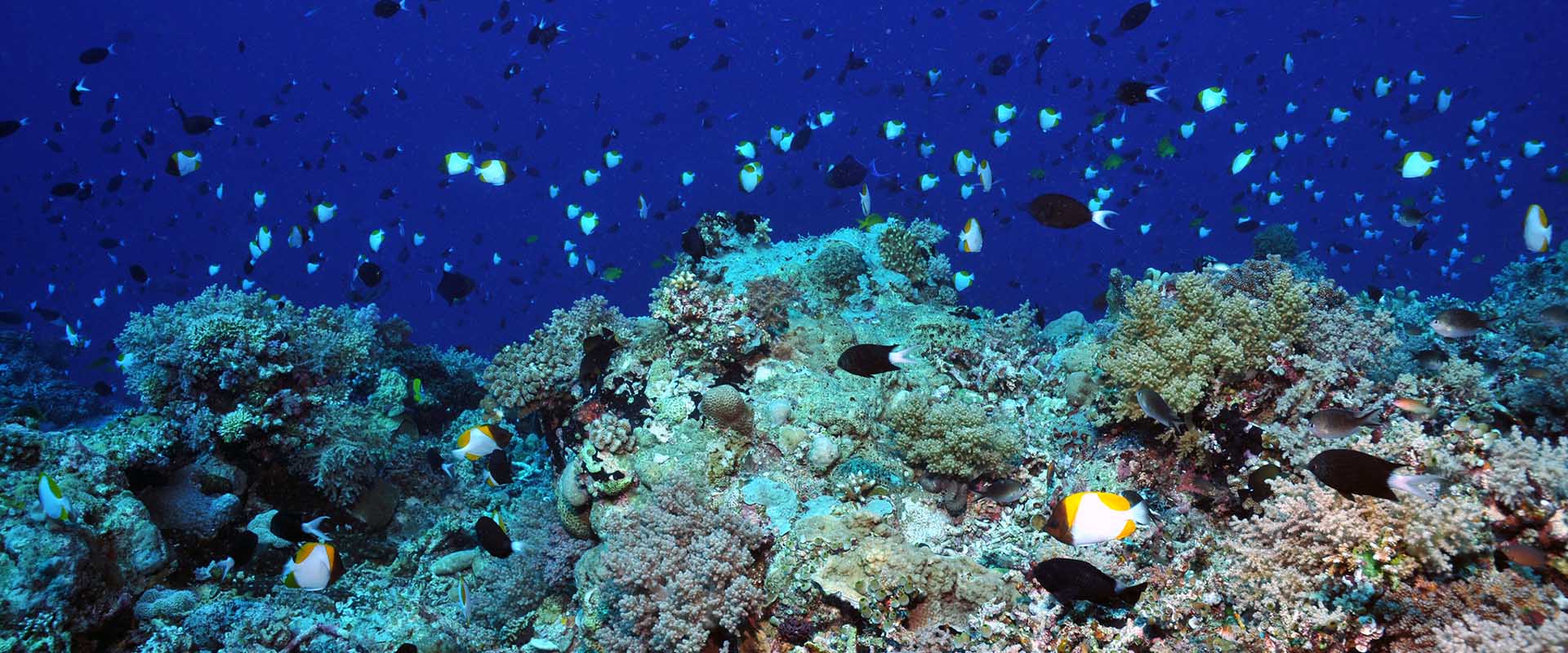Liveaboard Diving in Apo Reef
What To Expect on an Apo Reef Liveaboard
Liveaboards in Apo Reef offer quintessential atoll-diving sights, like tons of sharks, sheer drop-offs frequented by pelagics, massive coral colonies, and incredible biodiversity of reef life. Apo Reef is the world's second-largest contiguous coral reef and the largest atoll in Asia. Apo's huge area of 40 square kilometers, about 40 kilometers off the coast of Sablayan in Occidental Mindoro, Philippines, has been protected since 1996 as the Apo Reef Natural Park. It should not be confused with Apo Island, an equally famous dive site to the South in Negros. A selection of Philippines liveaboards offers itineraries throughout the year to the Apo Reef area.
What You Can See
Apo Reef has only three small islands within its waters, and some of the best diving can be found around the one in the west of the park, Apo Island. The surface of this island hosts only a lighthouse and a ranger station; underwater, there's much more to discover, with a coral-festooned, sloping plateau on the southern and western sides, and some of Apo Reef's characteristic vertical drop-offs on the northern and eastern sides.
In the southwest plateau of Apo Island, look for table corals of massive sizes, as well as boulder corals, soft corals, brain corals, fire corals, and more. Scientists have reported that Apo Reef Natural Park contains almost 500 species of coral and invertebrates, making it a great area for Coral Triangle biodiversity enthusiasts. On Apo Island, various species of sharks patrol their coral garden, including grey reef sharks in the deeper areas. This plateau was hard-hit by dynamite fishing in the past; its recovery is a convincing bit of firsthand evidence for the efficacy of protected areas as a conservation strategy.
Along the northeast walls of Apo Island, some of which plunge to 80 meters, expect the current to bring in the grey reef and whitetip reef sharks, plentiful turtles, barracuda, and snapper. As the dive site name Shark Ridge implies, this area is the best place for reliable shark and other pelagic sightings around Apo Island. Mantas and hammerheads have even been known to visit. Whatís more, the textured walls hold infinite small caves, crevices, and overhangs to probe and explore for sleeping sharks or technicolor nudibranchs. Experienced divers will be best suited to navigate the current on these walls, whereas beginner divers can also enjoy Apo Island's southwest plateau.
10 kilometers to the west of Apo Island lie Hunter's Rock and Merope Rock, underwater pinnacles that take the pelagic action up a notch. Sharks, tuna, big trevallies, and other pelagics are common at these seamounts, and banded sea snakes sometimes meet up at Hunter's Rock to mate. Current, wind, and waves can all be strong in these areas, which are quite exposed, so dives are at the captain's discretion. At Hunter's the pinnacle almost reaches the surface, while Merope's tip lies submerged at around ten meters.
Another challenging but rewarding Apo Reef dive site is Apo 29, or Barracuda Hill, a seamount whose shallowest point is at 29 meters. If divers here can fight the current, they will witness huge schools of barracuda and plenty of sharks. For beginners and anyone else who wants to drift more peacefully over colorful corals and reef fish, Pandan Island is a great site, a coral garden under the auspices of a resort in the west of the park.
Getting To Apo Reef
Due to its size and distance from the mainland, Apo Reef is best dived from a Philippines liveaboard. Apo Reef itineraries often include Coron, and sometimes Tubbataha and Cuyo Island in the Sulu Sea as well. These trips usually run for seven nights at around 300 euros per night and visit Apo Reef for one to three days. The ports of departure for Apo Reef liveaboards are Batangas in Luzon and Puerto Princesa in Palawan. To get to Batangas, travelers should fly into Manila and take a bus about five hours south to the Batangas port. To get to Puerto, flights run regularly from both Manila and Cebu City on Philippine Airlines and Cebu Pacific. To reach Manila or Cebu City from abroad, direct flights are available from many Southeast Asian countries. Out-of-region international flights will usually transfer once before flying into the Philippines.
During the dry season of December through May, conditions are best suited for excellent diving. The water temperature in Apo Reef ranges from 26 to 31 C. The park entrance fees are around 45 USD for foreigners and around 35 USD for Filipinos.
Apo Reef Diving Reviews
- 9.3 Superb
- 8.8 Fabulous
- Philippe E
United States
Great dive experience, healthy reef, lots of reef sharks, turtles, and fish (parrotfish, barracudas, etc).
Diving Apo Reef in January on the Navis 1
- 9.2 Superb
- Robert D
United States
Storm damage and water temperature has taken its toll. Average diving.
Diving Apo Reef in June on the Stella Maris Explorer
- 10.0 Exceptional
- Kristen M
United States
Pristine and the coral was over the top impressive.
Diving Apo Reef in November on the Infiniti
- 10.0 Exceptional
- Wesley O
United States
The schools of fish were never ending. Great experience!
Diving Apo Reef in January on the Infiniti
- 10.0 Exceptional
- Christine P
United States
Amazing! The visibility was incredible. Lots of micro and macro life.
Diving Apo Reef in February on the Dolphin
- 8.8 Fabulous
- Jonas T
Belgium
Nice wildlife like schools of Parrot bumpheadfish, big wrasse, Reef sharks, cuttlefish, dolphins, Eagle rays, ...
Diving Apo Reef in January on the Navis 1
- 8.4 Very good
- Bruno P
Portugal
Apo reef is a superb diving destination
Diving Apo Reef in November on the Navis 1
- 6.8 Review score
- Carina R
Germany
Amazing! Stunning coral and marine life.
Diving Apo Reef in March on the Agos
- 9.6 Exceptional
- Schroeter S
Switzerland
Coraux impécables, vie marine flamboyance
Diving Apo Reef in January on the Agos
- 10.0 Exceptional
- Florian K
Germany
Amazing Reef with a healthy underwater marine life. Advanced licence is recommended for the Apo Reef
Diving Apo Reef in January on the Agos











